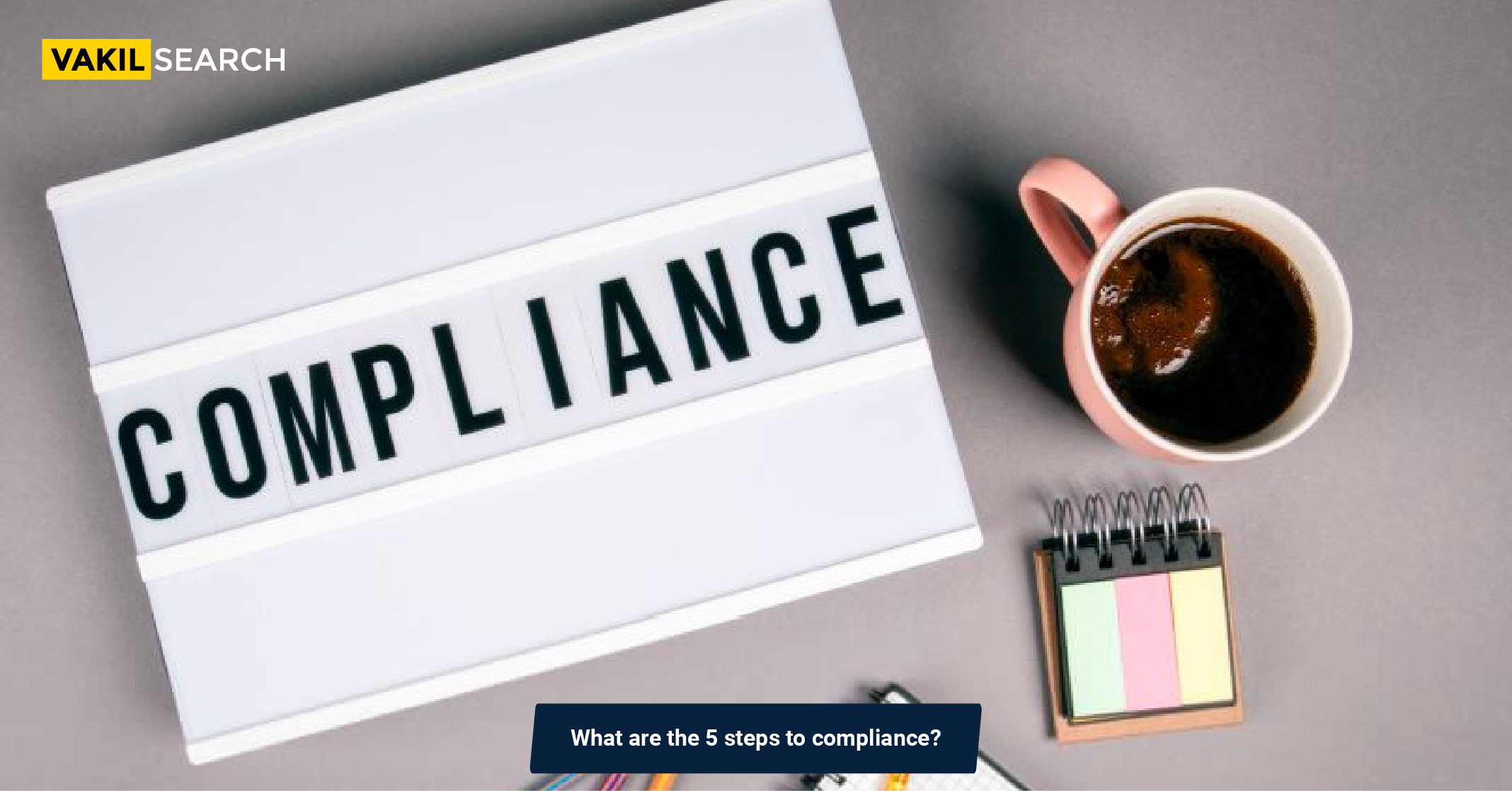Explore a comprehensive five-step approach to business compliance, from understanding regulations to training employees, fostering trust and reliability.
Introduction
Compliance is a critical aspect of any business, ensuring that the organisation operates within the boundaries of legal and regulatory requirements. It involves adhering to laws, regulations, standards, and internal policies relevant to the industry. A structured approach to achieving compliance not only mitigates risks but also establishes trust and credibility. In this article, we’ll delve into a five-steps to compliance approach that businesses can follow to achieve and maintain compliance.
What Are the 5 Steps to Compliance?
Step 1: Understand Regulations
Understanding the regulatory landscape that governs your industry is the foundational step towards achieving compliance. Regulations vary across industries and regions, so it’s crucial to identify and comprehend the specific laws and standards applicable to your business.
Best Practices and Examples
Thorough Research: Conduct extensive research to identify relevant regulations and compliance requirements. Utilise governmental websites, industry publications, or consult legal experts.
Engage Legal Experts: Collaborate with legal professionals who specialise in your industry to interpret complex regulations and provide guidance on compliance strategies.
Regular Updates: Stay updated with the evolving regulatory environment by subscribing to regulatory newsletters, participating in industry forums, and engaging in continuous education.
Step 2: Conduct Risk Assessment
Once the relevant regulations are identified, a comprehensive risk assessment is essential. This step involves evaluating potential risks and understanding their potential impact on the business operations and compliance objectives.
Best Practices and Examples:
Identify Risks: Recognise the potential risks associated with non-compliance, including financial, legal, reputational, and operational risks.
Prioritise Risks: Prioritise identified risks based on their potential impact and likelihood. This will help in focusing efforts and resources on the most critical areas.
Mitigation Strategies: Develop strategies to mitigate identified risks, including preventive measures and contingency plans.
Step 3: Develop Policies
Once risks are assessed, developing robust policies and procedures that align with the identified regulations and risk mitigation strategies is crucial. Policies set the framework for compliance and guide employees on expected behaviour.
Best Practices and Examples:
Clarity and Simplicity: Craft policies that are clear, simple, and easy to understand for all employees, regardless of their role or level within the organisation.
Regular Training: Conduct regular training sessions to educate employees about policies and their significance. Ensure all employees are well-versed with the compliance policies.
Alignment with Regulations: Ensure that policies are in complete alignment with the identified regulations and industry standards.
Accurately estimate your business set up costs with our business setup calculator. Start your business on the right foot!
Step 4: Train Employees
Effective training is a cornerstone of compliance. Educating employees about company compliance policies and procedures empowers them to act in accordance with the established guidelines, reducing the risk of non-compliance.
Best Practices and Examples
Interactive Training: Utilise interactive training methods such as workshops, role-plays, and case studies to make the training engaging and impactful.
Compliance Champions: Appoint compliance champions within the organisation who act as advocates and mentors, aiding their colleagues in understanding and implementing compliance measures effectively.
Continuous Training: Implement ongoing training programs to keep employees updated on any policy changes, new regulations, or best practices related to compliance.
Step 5: Regularly Review and Update
Compliance is not a one-time task; it’s an ongoing process that requires regular review and updates. Regularly reviewing policies, procedures, and the regulatory landscape helps in ensuring continued compliance and effectiveness.
Best Practices and Examples:
Scheduled Audits: Conduct regular internal audits to assess compliance adherence and identify areas that need improvement.
Feedback Loop: Establish a feedback mechanism to gather insights from employees regarding the practicality and effectiveness of compliance policies.
Adaptability: Stay flexible and adapt policies and procedures based on the changing regulatory environment, organisational structure, or business models.
Conclusion
Achieving compliance is vital for the sustainability and success of any business. A structured five-steps to compliance approach, beginning with understanding regulations and culminating in regular reviews and updates, provides a roadmap to navigate the complex world of compliance. By integrating compliance into the organisational culture, educating employees, and staying vigilant through regular assessments, businesses can ensure adherence to legal and regulatory requirements, fostering trust and reliability within their industry. Vakilsearch plays a crucial role in assisting businesses through this journey. Our expertise and guidance can greatly enhance a company’s ability to comprehend, implement, and stay up-to-date with the ever-evolving landscape of compliance, making it an invaluable asset for any organisation striving for sustained growth and compliance excellence.
Read more,
- What Are the Compliances for OPC?
- What Are the Basic Rules for a Pvt Ltd Company?
- What Are the Five 5 Elements of Risk Management?

